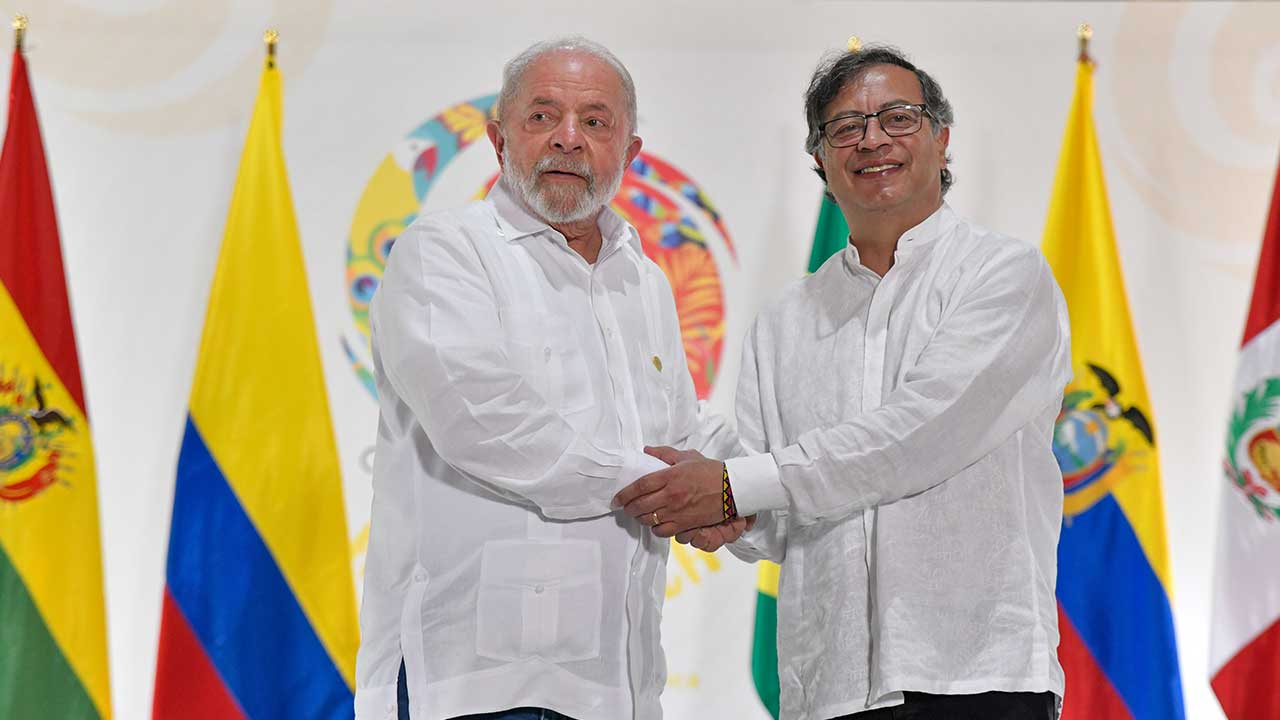
Latin America Rediscovers Common Sense
Why 2023 was the year Latin America rediscovered common sense.
BY JOHN PRICE
After a three-year (2020-2022) rollercoaster ride, politically, socially, and economically, Latin America found its footing in 2023. The region stopped electing angry leftists who promised to overhaul the state, the economy outgrew expectations and the region’s leading currencies gained against the greenback. After recent years of tumult, a comparatively dull 2023 in Latin America counts as a victory.
2020 brought us the pandemic, a health crisis that Latin America was very ill-prepared for, possibly worse-positioned than any region in the world. With its densely populated cities, poor ICU infrastructure and multi-generational households, bending the curve of infection rates required lengthy quarantines. But two years of on and off lockdowns—and even longer school closures—created an economic, fiscal, and social crisis. Latin America’s informal labor force (60% of the total) was rendered penniless, exacerbating the region’s debilitating class divide. The region’s IVA-dependent tax code proved dysfunctional as the services sector collapsed and every major economy took a fiscal hit.
In 2021, as vaccinations came online and investigative journalists began to uncover the immense malfeasance of many governments in the region that stole vast sums and jumped vaccine cues, voters grew increasingly disgruntled. In 2021 and 2022, they took their revenge, electing disruptive, untested political leaders who promised to punish the tone-deaf elite and the establishment. Their anger brought to power Boric in Chile, Petro in Colombia, and Castillo in Peru, among others. By the end of 2022, Latin America’s seven largest economies were all run by decidedly left-wing leaders. Investors frowned upon the region, predicting a catastrophic 2023. They were wrong.
Latin America has fundamentally changed—or at least its largest markets have. An old Argentine proverb says: “If in your 20s you are not a leftist, you are inhumane. If by the time you reach 40, you are not a conservative, then you are an idiot.” As we grow older, we have more to lose. The idea of burning the proverbial house to its studs and starting over no longer appeals to most of Latin America and the Caribbean, the fastest-aging region in the world. Latinobarómetro surveys consistently show a Latin American preference for a market economy and a welcome embrace of foreign direct investment. A close look at Latin American cross-border migration shows the movement of people from economically dysfunctional left-wing regimes towards market economies. The class warfare appeal of reactionary politicians in 2021 and 2022 made sense at a time when COVID policies disproportionately punished the poor and middle classes. But by 2023, voter thinking had changed.
The political pessimists—who predicted “another Chavez/Venezuela” when Petro, Boric, Castillo and others were elected—underestimated how resilient the democratic foundations of these and other large countries have become, thanks to a more educated and informed voter, politically diversified congresses, brilliant central bank management, and three decades of low-profile reforms and institution building. Petro is increasingly boxed in by political and judicial opposition. Boric pivoted to the center after the first constitution reform referendum. Castillo was pushed out of power by his congress. Lula’s revenge political agenda has been somewhat curtailed by a lack of legislative support. AMLO has been kept in check by an independent central bank. Some economies in the region will drift for a few years under poor leadership but they won’t regress as many feared.
The picture is not universally rosy by any means. There is a worrisome level of tolerance for undemocratic governance in Central America, specifically Nicaragua, El Salvador, Honduras, and Guatemala (should they fail to transition). Cuba and Venezuela remain stubbornly undemocratic, despite US efforts to kindle change.
But 90% of investment in Latin America never reaches these small markets. Where money matters, Latin America seems to be ready to elect pro-investment, democratic leadership. In 2023, Ecuador, Paraguay, Argentina and even Guatemala all elected leaders that inspire confidence in the international investment community. Even the plebiscite vote in Chile and mid-terms in Colombia were reassuring to investors.
2024 promises to be another relatively calm year, electorally speaking, for Latin America. Most election outcomes are already predicted, none of which shock or bother investors too much. Latin American news will be drowned out by US navel-gazing as Americans ready themselves to vote. As the world looks away, experienced investors will benefit from a politically tranquil year in Latin America, cheering on Argentina’s bold experiment with libertarian economic policy, hoping for a porteño miracle but also content in the knowledge that the region has rediscovered its pragmatic footing.
John Price is the Managing Director of Americas Market Intelligence. With 20 years of experience in Latin American market intelligence consulting, Price has supervised nearly 1,200 client engagements and advises clients in more than 20 countries across Latin America. He can be reached at jprice@americasmi.com
This article was first published by AMI. Republished with permission.












